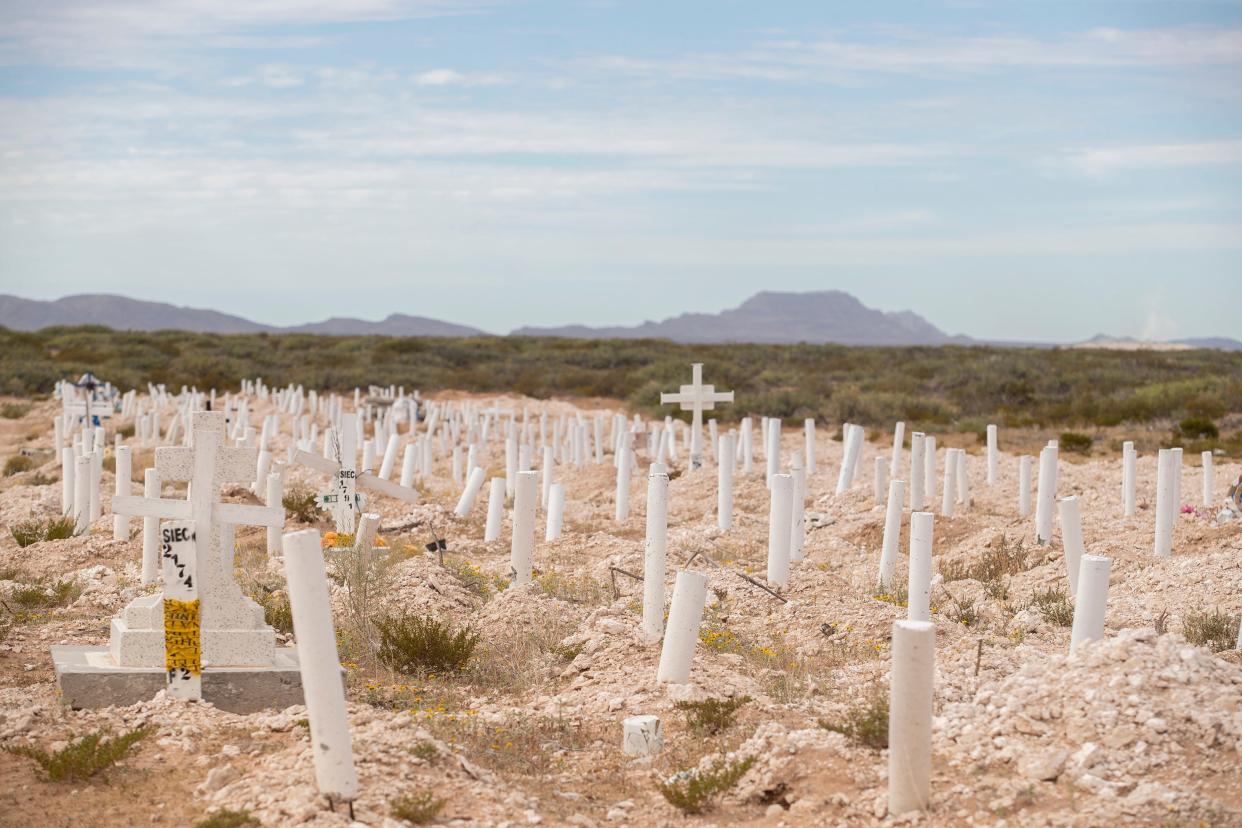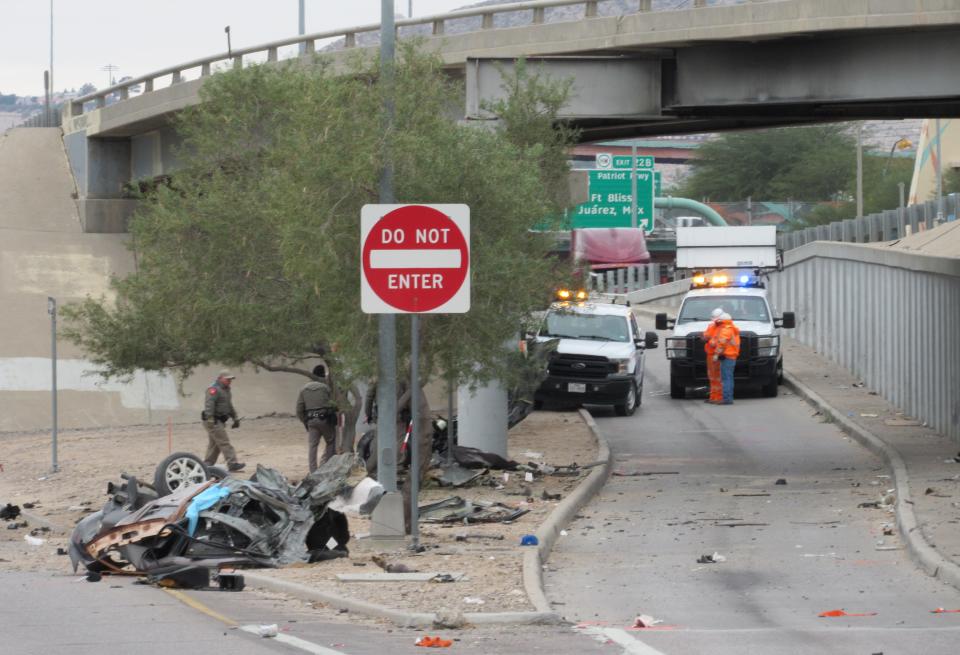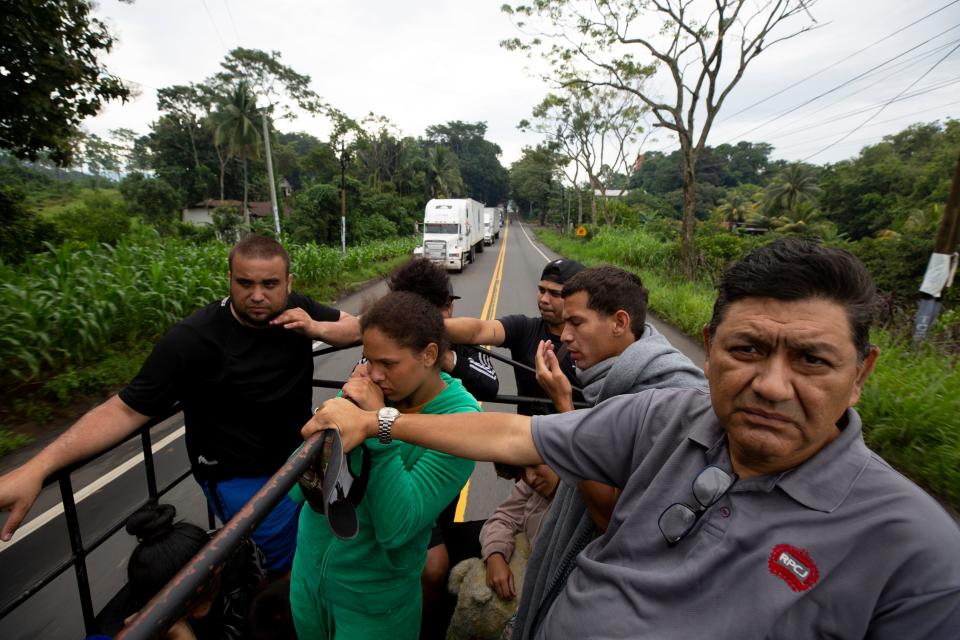Why we spent a year telling human story of deadly disaster at El Paso, Juárez border

Jesús Iván Sepúlveda Martínez was a beloved son, husband and father of a newborn, 6-month-old Sophie.
He was just starting his own life, hoping to reach Austin to work and save money to build a house for his family.
Sepúlveda died near a waterhole when twin, 60-year-old brothers allegedly shot him while he walked with others south of Sierra Blanca, Texas, in late September 2022. Two weeks after his death, authorities returned his remains to his family in Juárez in a simple, blue casket.
“We're destroyed,” said Napoleón Sepúlveda in Spanish, weeping into a handkerchief while three family members cried on his shoulder.
Jesús Iván Sepúlveda Martínez was a migrant.
His story illustrates the human toll of the migration crisis at the U.S. border. That suffering was brutally emphasized six months later, when 40 men locked in a México detention center died when it went up in flames.
This week we launched a special report, "'La pérdida - The loss’: Deadly disaster at El Paso, Juárez border."
The series, the culmination of a year of reporting, tells the human story of the sons, daughters, wives and husbands who died hoping to find a new life in the United States, and of the families and loved ones left behind.

It's a story too often lost in the partisan bickering over immigration policies and fear-mongering reports of faceless masses crossing the border.
Drawing on police reports, Border Patrol records, medical examiner reports and interviews with immigration experts, officials and, most importantly, the families of migrants, the El Paso Times sought to answer the questions: Who were the people dying at the border, and why did their simple dream of a better life so often turn deadly?
We had no idea when we started the project earlier this year that 2023 would close out as the deadliest year ever for migrants along the 268 miles of international border in the Border Patrol's El Paso Sector. One hundred and forty-nine migrants died in the 12 months ending Sept. 30, soaring from six migrant deaths recorded six years ago.
More: ‘La pérdida - The loss’: Deadly disaster at El Paso, Juárez border
Our reporting took us to cities and villages across México and Guatemala, where we spoke to grieving families and learned about their loved ones who ventured north hoping to flee violence or provide support for their families back home.
The reporting showed how out-of-date immigration laws, ports of entry closed to many immigrants and razor wire on the Rio Grande led migrants to take deadlier risks to seek relief in the U.S.
Some migrants died alone in the desert, some died falling in desperate attempts to scale the border fence and others drowned in the Rio Grande canals. Still others died in the hands of smugglers loyal to the drug cartels or they died crammed into vehicles that slammed into concrete highway barriers pursued by Texas troopers.
El Paso Times journalists faced significant obstacles reporting this series, tackling unresponsive agencies, physical challenges and political strife in Guatemala that upended one of their reporting trips.
Oftentimes, Texas authorities and border-based consulate officials don't publicly identify the victims. Key agencies including El Paso County’s Office of the Medical Examiner and the Doña Ana Sheriff’s Office declined interviews for this series.

Reporter Lauren Villagran spent weeks making records requests and reviewing documents obtained from regional law enforcement agencies to stitch together a database of migrant deaths. The Times would like to highlight the New Mexico Office of the Medical Investigator for its transparency, including providing unprecedented access to the agency’s investigators and leadership as their workload swelled through the summer.
Villagran and photojournalists Omar Ornelas and Gaby Velasquez took extra care reporting through one of El Paso’s hottest summers on record as they followed first responders into the desert in temperatures well over 100 degrees.
Villagran and Ornelas traveled to Guatemala in early October 2023 to meet with the parents of five men killed in the detention center fire, who all belonged to the same Mayan community.
They traveled there despite a growing political crisis. Mid-trip, protestors shut down key highways to and from the capital of Guatemala City and threatened to close access to the international airport. Evaluating the risks, Villagran and Ornelas cut their trip short and left the country on foot via the Mexican border, following the same path used by so many migrants and reporting on the political crisis and surging migration along the way.

Ornelas and freelance correspondent Aline Simerman returned to Guatemala in late October to finish the reporting.
Simerman, too, spent months working sources in Juárez, Chihuahua state and the Mexican federal government to create a picture of the fatalities and risks migrants face in Juárez, the final leg of their migration journey to the U.S. border.
Our sister newsroom, the Arizona Republic, contributed with two important stories, one from México's southern border and another about strategies used in the Border Patrol's Tucson Sector to handle migrant deaths with dignity.
We don’t normally show dead bodies or even body bags in our coverage, but we took great care in selecting those images used in this special report.
We are publishing select stories in Spanish to serve readers in the communities many migrants hail from, as well as bilingual communities in the U.S.
The name of the series purposely used Spanish and English. “La pérdida” was the repeated wail of a Guatemalan mother whose toddler son was killed in a pedestrian crash at the border. She lost her pregnancy, as well, when she was hit trying to save her son.
Tim Archuleta is the editor of the El Paso Times. You can reach him at tarchuleta@elpasotimes.com.
This article originally appeared on El Paso Times: Migrant deaths soared at fortified border, harsh desert conditions

